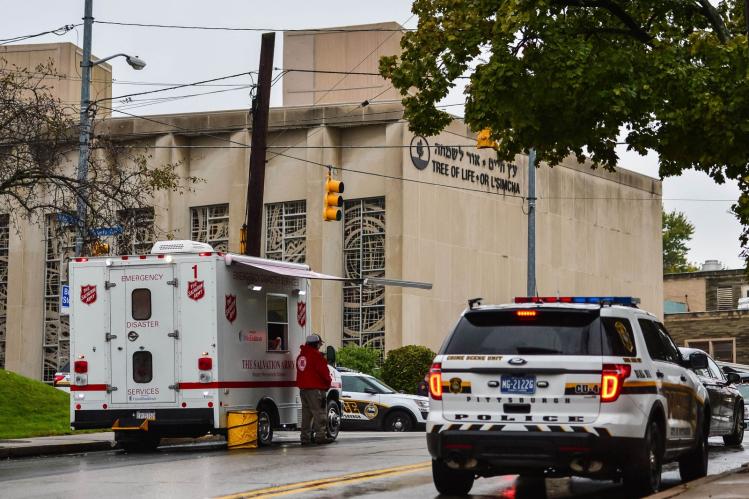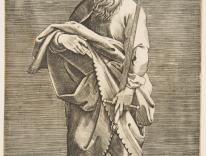
When the great Jewish theologian and academic Abraham Joshua Heschel, who authored numerous classic books and marched with Martin Luther King Jr. in the civil-rights movement, was growing up as a boy in Warsaw, he was often sent out in the mornings by his mother to purchase bread for the day. Leaving the house, he would avoid taking the most direct route to the bakery, so that he wouldn’t have to pass by the city’s great Catholic cathedral. Were he to walk in its shadow, he had learned from experience, he would be seized with an uncontrollable trembling, invariably thinking of all his community’s rabbinic forebears who over the years had been summoned to meet with the Christian hierarchy there, whose declarations held sway, and often for ill, in his Jewish community.
As an adult, Heschel recounted this experience to the New Testament scholar J. Louis Martyn, his sometime Christian colleague at Union Seminary in New York, and Martyn, reflecting on it later, said this:
It was for me a highly affective and truly effective introduction to the degree to which the power of the Christian church hovered menacingly over the life of the largely powerless Jewish community in Warsaw and elsewhere. And, trying to see through the eyes of the frightened little boy, I had to ask myself whether the monolithic nature of that power—so well represented by the literal monolith of the cathedral’s structure—was truly separable from its various parts. Was the glorious church music implicated, the scriptural oratorios of Handel and Felix Mendelssohn? Did the Christian Scriptures themselves play a role in the persecutory shadow of the cathedral?
I thought of this anecdote the evening after Robert Bowers entered the Tree of Life synagogue in the Squirrel Hill neighborhood of Pittsburgh and opened fire on congregants there, killing eleven people before being shot himself by the police and taken into custody. I thought of it specifically after I saw Bowers’s self-authored tagline under his profile picture on the social-media site Gab. It read thus: “jews are the children of satan. (john 8:44) -------the lord jesus christ is come in the flesh.”
The verse from the New Testament’s fourth gospel to which Bowers’s profile alluded puts the following words into the mouth of Jesus: “You”—in context, it is clear that those whom the Gospel calls simply “the Jews” are the subject of the pronoun—“are from your father the devil, and you choose to do your father’s desires” (NRSV). It is the same verse that Hitler’s mentor Dietrich Eckart, a fanatical anti-Semite who helped strategize the Nazi rise to power, approvingly cited. And, at least on a first reading and, admittedly, on a second and third as well, it is a verse that seems designed not merely to castigate Jewish actions but to condemn Jewish persons. The Christian New Testament scholar Richard Hays minces no words when describing the terrifying effects John 8:44 seems poised to unleash:
John makes a fateful theological step: from the empirical fact of the unbelief of the Jews, he infers an ontological dualism. The Jews who do not believe must be children of the devil…. One shudders to think of the ethical outworking of such a theological perspective on the Jews.
In the wake of the Pittsburgh shooting, one would have to be some sort of stoic not to shudder under the weight of Martyn’s question: “Did the Christian Scriptures themselves play a role in the persecutory shadow of the cathedral [in Heschel’s Warsaw]?”—and did the Christian Scriptures play a role in encouraging the gunfire that tore through a synagogue in twenty-first century America last week?
***
I make my home a few miles from Squirrel Hill, on the opposite side of the Pittsburgh city limits. A couple of years ago, having returned from my first (and, so far, only) trip to Israel and Palestine, I contacted one of the rabbis who had helped lead the trip to ask him if he knew of anyone in Pittsburgh I could meet with to continue talking about some of the questions and concerns the trip had stirred up in me. He wrote back and put me in touch with the rabbi who at the time was the leader of the Tree of Life congregation in Squirrel Hill, and a few days later I drove across the city and met him in his office at the synagogue. He was warmly friendly and generous, with a wry wit, and he patiently answered some of my questions about Jewish-Christian dialogue efforts in Pittsburgh and what opportunities my seminary students might have to talk with him about Judaism and the Holy Land, and to participate in interfaith symposia and workshops. After our conversation, he gave me a tour of the synagogue, clearly and justly proud of its older, more historic rooms, furnished with rich wood and thick carpeting and glowing with the soft light filtering through the stained glass windows. It was a beautiful building, and the flyers and notices on the walls bespoke a vibrant community life.
But it is not simply my geographical and religious proximity to the Tree of Life synagogue (I can picture its interior and the faces of some of the congregants I met there) that makes me wonder about the horrifying potential of John 8:44, and other similar texts scattered throughout the New Testament (see, for another instance, 1 Thessalonians 2:14–16) to incite anti-Semitic violence. It is also my vocation as a teacher of the New Testament for future priests and other Christian ministers that causes me to wonder about it. And, perhaps most fundamentally, it is that I, a believing Christian myself, confess that verse and the rest of the New Testament to be inspired by God. What am I to do with the fact that a white supremacist found, or believed he found, in a document I consider to be divine speech, a mandate to take up an assault rifle and fire on a peaceful gathering of Jews in their house of worship?
In her new book The Dangers of Christian Practice, Episcopal priest and Duke Divinity School professor Lauren Winner has described what she calls the “characteristic damage” that attends many of God’s best gifts. Think, she says, of how the Eucharist—the summit of Christians’ communion with God in Christ—became the occasion of violence against Jews in the Middle Ages. During Holy Week, medieval Christians would emerge from their churches, having consumed Christ’s body and blood, to persecute, maim, and kill Jews. We might say that such violence is only accidentally related to the Eucharist, insisting that there is no inherent connection between receiving Communion and the subsequent attacks on Jewish bodies. But Winner argues that we miss something crucial if we take that easy escape route. “Things become deformed by sin,” she writes, “in ways that are proper to the thing being deformed, and when those deformations have consequences, you cannot separate the consequences from the deformed thing itself, because it belongs to the thing potentially to have those very consequences.” In other words, while we may insist that the Eucharist itself does not generate violent evil by itself, it nonetheless remains the case that the exclusionary triumphalism of certain Eucharistic celebrations was intimately bound up with the way that triumphalism eventually expressed itself in physical violence.
Might something similar be the case with the Gospel of John? Regardless of whether one thinks (as I do) that the fourth gospel is capable of being interpreted in ways that do not give aid and quarter to anti-Semitism, it remains a stubborn fact of history—indeed, of last week’s history in my home city—that even the words of Jesus can be used by sinners as fuel for murderous fire, and if we Christians are going to stand by the words of our Lord, we must do so with open-eyed awareness of how prone some of them are to destructive interpretation.
But perhaps there is yet more to say. Winner’s book goes on to suggest that Christian practices which have been yoked to great evil can nevertheless “generate from within themselves an awareness of the damages for which they have a propensity.” There is, in short, a way that the Christian gospel foresees—and seeks to forestall—the damage its adherents inflict in their perverted and misguided efforts to embody that very gospel. And there is, equally, a way that the Gospel of John works against any violent deployment of its rhetoric by featuring, at its heart, a Jew who refuses to take up the sword but instead gives up his flesh “for the life of the world” (6:51)—including, it becomes clear as the narrative progresses, the Jewish world which gave him birth.
Were the young Abraham Heschel to have stepped inside the cathedral in Warsaw and looked toward the altar, he might have been chilled by the sight of robed priests who wielded power to the detriment of his family. But he might also have glimpsed a statue hoisted on a pole: a portrayal of a crucified Jew, arms outstretched, clothing absent, face disfigured in self-giving sorrow, whose innocent suffering stood as a silent condemnation of any unjust, violent action performed in His name, even were that action performed by a priest or a bishop. And had Robert Bowers of Pittsburgh bothered to read beyond the Johannine proof text he placarded on his social media profile, he would have read of that same Jewish man who declared to one of his fellow Jews: “God did not send the Son into the world to condemn the world, but in order that the world might be saved through him” (3:17). Instead, Bowers became the executioner of that Son’s family, and in so doing not only missed the heart of the Gospel but also made it that much harder for anyone to go on believing that it’s true.
Please email comments to [email protected] and join the conversation on our Facebook page.
Previous Story
Survivor, Wreck of the Jason
Next Story
Our ‘Ally’ Saudi Arabia

